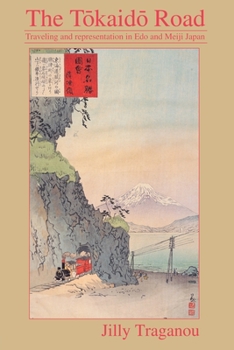The Tôkaidô Road: Travelling and Representation in EDO and Meiji Japan
Select Format
Select Condition 
Book Overview
The T kaid Road offers a comparative study of the T kaid road's representations during the Edo (1600-1868) and Meiji (1868-1912) eras. Throughout the Edo era, the T kaid highway was the most important route of Japan and transportation was confined to foot travel. In 1889, the T kaid Railway was established, at first paralleling and eventually almost eliminating the use of the highway. During both periods, the T kaid was a popular topic of representation and was depicted in a variety of visual and literary media. After the installation of the railway in the Meiji era, the T kaid was presented as a landscape of progress, modernity and westernisation. Such representations were fundamental in shaping the T kaid and the realm of travelling in the collective consciousness of the Japanese people.





